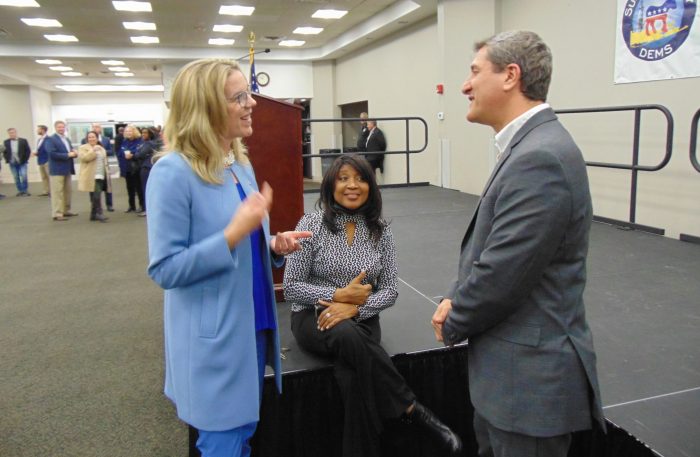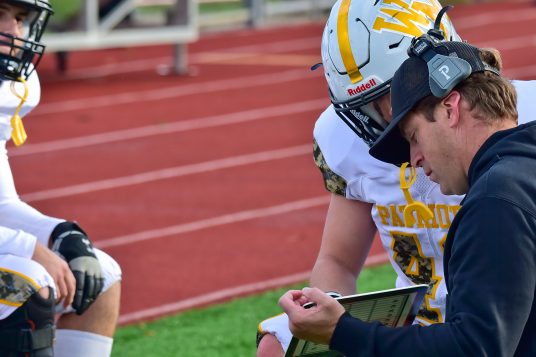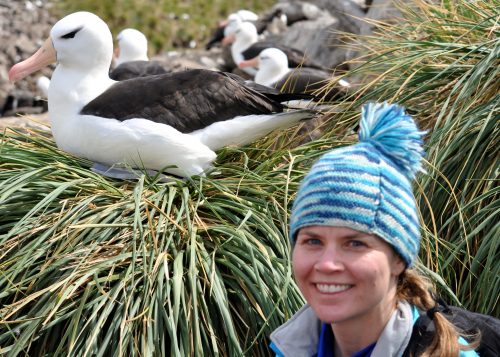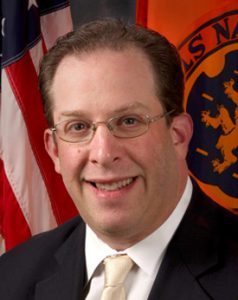By Leah S. Dunaief

Talk about mixed emotions. That’s what we feel when we are driving along and suddenly see a deer running out from among the trees. They are beautiful and graceful animals, and we stop the car and point them out to our small children in the back seat, who are thrilled at the sighting, perhaps recalling Bambi. But there is a lot more to the deer story here in suburbia.
Long Island is home to more than 20,000 white-tailed deer, and that number has been exploding because there haven’t been many threats — until now. As long as they could find enough food and survive particularly harsh winters, the occasional highway collision and the short hunting season, they were largely untroubled.
However, they have been a nuisance to residents because they devour flowers and vegetable gardens. And while they can be the innocent carriers of an infected tick, whose bite causes the miserable Lyme disease, they are gentle enough souls who leap out of sight as humans approach.
Now it turns out that they may be a more serious problem to us. A new study in Iowa found that the deer seem to be contracting the coronavirus from humans and spreading it to one another. This means the deer could become a reservoir for deadly mutations of the virus that could then possibly be passed back to humans. In that event, another vaccine would have to be developed to target the new variant in much the same way as flu shots are modified from year to year.
Researchers were astonished at how widespread the infection was among the deer population there, estimated at 80%. Deer hunters and others who handle deer (as road kill) are being urged to take precautions to avoid transmission, like wearing rubber gloves and a mask.
Researchers don’t know exactly how the deer get infected by humans, but they suggest it might occur when people in Iowa feed deer in their backyards, or through sewage discharges or anything partially chewed by an infected human, like a “splotch of chewing tobacco” that then might be licked by a deer.
The study of the deer was led by veterinary microbiologists from Penn State, according to an article in The New York Times on November 9, and they were able to make their analysis by examining the lymph nodes of dead deer. But they have not yet been able to determine whether the animals were sickened by the pathogen. They also are going to examine other wild animals, especially mice, that live in close proximity to humans, to see if they too might carry the virus.
There is well established research that shows some pathogens do move back and forth between animals and humans, including those that cause yellow fever and West Nile. And we do know our dogs and cats can get COVID-19.
Also in the news is something called epizootic hemorrhagic disease, transmitted by the EHD virus that can kill deer within 36 hours of infection. This often-fatal disease is transmitted by biting midges. We call them “no-see-ums.” Deer do not catch it from each other, nor can humans be infected by either deer or midges. But stricken deer bleed to death, especially in late summer and early fall when midges are abundant.
While there is no treatment for EHD, the first frost kills the midges, ending the outbreak. The virus was first confirmed in New York in 2007 with small outbreaks in the state’s northern counties, according to Cornell University College of Veterinary Medicine. By 2020, the affected deer were found in the lower Hudson Valley, in other states along the eastern United States, and also in zoos.
“The dead deer do not serve as a source of infection for other animals because the virus is not long lived in dead animals,” according to the Cornell Wildlife Health Lab. Suffolk County has 139 cases reported and 8 confirmed as of last week.











































